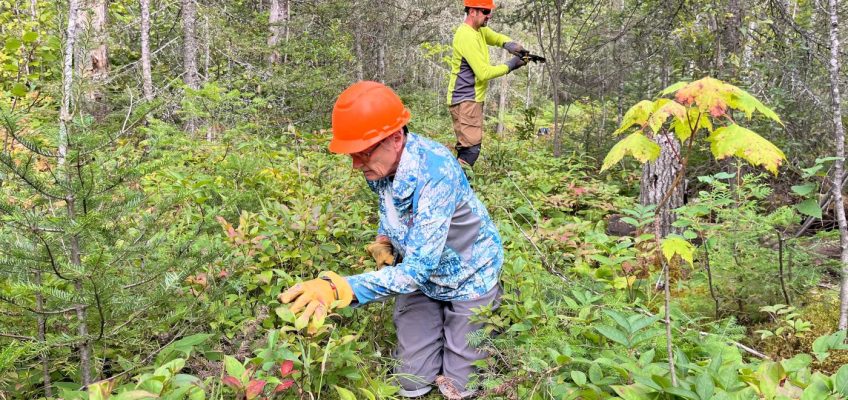The U.S. Forest Service will not log in designated wilderness areas like the Boundary Waters, federal officials clarified, days after issuing an emergency order intended to boost logging on national forest land throughout the country.
The order, issued last week, declared an emergency on some 113 million acres of national forest land, citing wildfire risk or damage by insects and diseases, and called for an increase in timber production on those lands to reduce wildfire risk.
Wide swaths of several wilderness areas, like the Boundary Waters, were included in that acreage total, and a map accompanying the order made no distinction between wilderness areas, where logging is banned, and non-wilderness national forest land, where logging is allowed but regulated. Locally, that caused concern that the order would lead to logging within the BWCAW.
But a U.S. Department of Agriculture spokesperson said in an email to the Duluth News Tribune this week that logging wasn’t planned in designated wilderness areas. Instead, the spokesperson said other actions, like prescribed burns, would be used in those areas instead. The Forest Service oversees the Superior National Forest and BWCAW and is part of the USDA.
The 1964 Wilderness Act significantly limited logging in the Boundary Waters, and the 1978 Boundary Waters Canoe Area Wilderness Act banned it.
“The clumsy map that they put out shows how poorly planned this whole order was,” said Kevin Proescholdt, conservation director for Wilderness Watch. “Because the map showed logging would occur in all kinds of wilderness areas across the national forest system, not just the Boundary Waters. And I think, for me, it’s indicative just a slap-dash way in which the Trump administration is approaching this.”
The order was made in USDA Secretary Brooke Rollins’ April 3 memorandum titled “Increasing Timber Production and Designating an Emergency Situation on National Forest System Lands,” which itself was a response to President Donald Trump’s March 1 executive order “Immediate Expansion of American Timber Production,” which urged the reversal of “onerous” and “heavy-handed” regulations and policies that Trump said “prevented full utilization of these resources and made us reliant on foreign producers.”
Rollins’ memo does not mention wilderness areas or prescribed burns, but in addition to authorizing the “removal” and “salvage” of trees, it promotes the more general “removal of hazardous trees” and promotes proposals that “reduce” fuels like vegetation.
Even if logging remains outside the BWCAW, it could still cause disruptions, like noise, in the wilderness, Proescholdt said. He added that additional large-scale prescribed burns within the wilderness could bring activities like chainsaws to cut firelines and the landing of helicopters, which are illegal under the Wilderness Act except in emergencies.
The order encourages “expedited compliance” with the Endangered Species Act, National Historic Preservation Act, and Clean Water Act, citing authority from emergency provisions in the Infrastructure Investment and Jobs Act. A news release said it seeks to “increase timber outputs, simplify permitting, remove National Environmental Policy Act processes, reduce implementation and contracting burdens, and to work directly with states, local government, and forest product producers to ensure that the Forest Service delivers a reliable and consistent supply of timber.”
“It’s in part to make up for the expected loss of wood products from Canada because of Trump’s stupid tariff war,” Proescholdt said. “But the essence of the order is that it’s trying to accelerate logging in the national forest and seeking to bypass or skirt around the environmental regulations that have been in place for decades.”
The Department of Commerce planned to increase import taxes on Canadian softwood lumber from 14% to more than 34%, Bloomberg reported Monday.
Acting Associate Chief of the Forest Service Chris French instructed regional foresters and deputy chiefs throughout the agency in an April 3 letter to boost timber volumes by 25% over the next four to five years.
“Today, we enter a new era marked by pressing issues like a growing demand for domestic lumber and wildfire resilience. … To address these challenges, we need to increase our active forest management to improve both the prosperity of rural America and the health of our forests,” French wrote.
Related Articles
Smith introduces bill to ban copper-nickel mining in BWCA’s watershed
Trump makes US copper mining a focus of his domestic minerals policy
Minnesota Capitol bill would bar copper-nickel mines within BWCA’s watershed


Leave a Reply